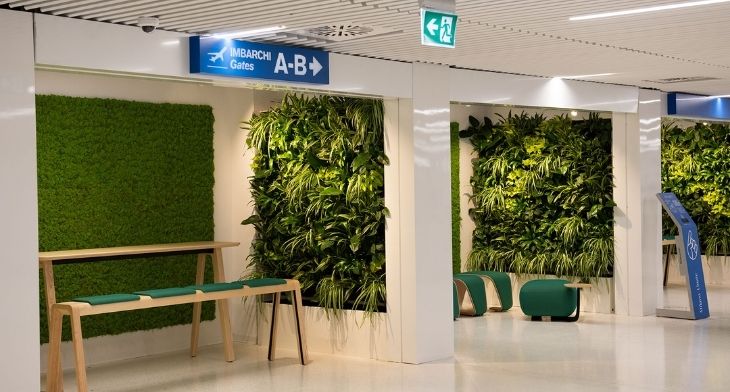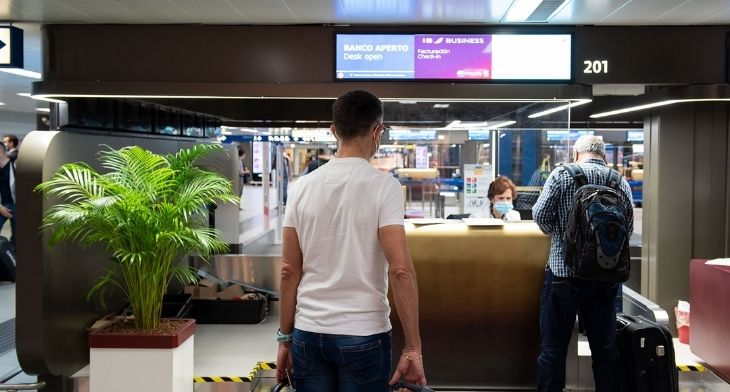


Following its exterior makeover in 2018, Milan Linate has now unveiled its interior revamp featuring three key elements: design, technology and sustainability.
The aim of the airport’s €40 million new look was to give the airport a new identity that would characterise the spaces, atmosphere and materials in order to improve the traveller experience and enhance customer satisfaction. For the operational areas, the project was inspired by the guidelines of neuro-architecture, a method whereby neuroscience is applied to architecture, aiming to create spaces capable of fostering well-being, while reducing stress and anxiety to a minimum.
Work on Linate’s terminal involved the architectural and functional redesign of the check-in area, security filters and duty-free area. The terminal has also been expanded and now covers an area of 10,000 sq. m. over three floors. It features new gates and check-in facilities as well as a new shopping arcade and a new food and beverage area.
The check-in area has been redesigned with a double-height ceiling and with the inclusion of plants overlooking the first floor to create a calm, green space. The existing suspended ceilings have been replaced with wood-effect slats which have been alternated with plasterboard sails that enhance the perception of the surrounding space. An integrated lighting system emphasises the curved lines of the sails and the LED profiles alternating with the baffles. Meanwhile, the check-in desks have been redesigned to identify the SEA brand, with soft brass-covered edges.
The area dedicated to security checks has also been redesigned and reopened back in October 2020. The architectural elements, colours and materials in this area were chosen to reduce as much as possible the stress that security checks can cause passengers. The latest generation technologies have also been incorporated into the security check area too simplify and speed up the process.
New Explosive Detect Systems for Cabin Baggage (EDS-CB) that use CT technology have also been installed. The high efficiency of the system allows for screening without the need to separate electronics and liquids from carry-on baggage, further enhancing the travel experience.
Thanks to next generation biometric technology passengers can opt to have their ID verified using biometric technology, therefore reducing the need to show their paper documents at various stages throughout the airport journey.
To further reinforce a sense of place, the airport collaborated with Triennale Design Museum, which has allowed for the installation of historical works by famous Italian designers throughout the airport.
The new terminal has also been awarded BREEAM In-Use excellent certification – the environmental certification for buildings constructed according to sustainability principles.






